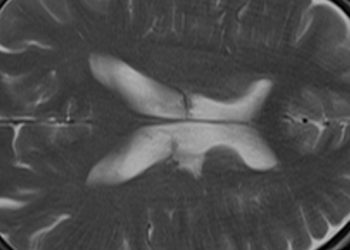Lamotrigine offers higher net health benefits and is more cost-effective than levetiracetam and zonisamide as first-line focal epilepsy treatment
1. Lamotrigine offered greater clinical benefit, fewer adverse reactions, and higher cost-utility normalized to quality-adjusted life years compared to levetiracetam and zonisamide.
2. Lamotrigine continues to be recommended as first-line therapy and standard comparator in trials for focal epilepsy.
Evidence Rating Level: 1 (Excellent)
Study Rundown: Focal epilepsy causes recurrent seizures limited to one cerebral hemisphere, typically treated with first-line therapies carbamazepine or lamotrigine. Recent studies have suggested non-inferiority of levetiracetam and zonisamide as first-line therapies for treating focal seizures compared to carbamazepine and lamotrigine, but limited long-term effectiveness and cost-utility data have been published. This multicenter, randomized, open-label, controlled, phase 4 trial compares levetiracetam and zonisamide with lamotrigine as first-line treatment options. Patients with a history of unprovoked focal seizures and not currently taking anti-seizure medications were eligible for this study. Participants were randomized equally to the three treatment groups and followed for two years. The primary outcome was time to 12-month remission from seizures, defined as the number of days from randomization to the end of a 12-month seizure-free period. Other outcomes included time to 24-month remission, adverse reactions, inadequate seizure control, and healthy economic evaluation via quality-adjusted life-years (QALYs). According to study results, levetiracetam did not meet non-inferiority criteria when compared to lamotrigine. Though zonisamide did meet non-inferiority criteria, treatment was associated with higher rates of adverse reactions when compared with lamotrigine treatment. Patient reported quality of life and cost utility analysis both favored lamotrigine over levetiracetam and zonisamide. These findings, together, support the continued use of lamotrigine as first-line therapy for focal epilepsy
Click to read the study in The Lancet
Relevant Reading: The SANAD study of effectiveness of valproate, lamotrigine, or topiramate for generalised and unclassifiable epilepsy: an unblinded randomised controlled trial
In-Depth [randomized controlled trial]: This study recruited 990 patients between May 2013 to June 2017, all of whom were randomly assigned to one of three treatment groups: lamotrigine, levetiracetam, and zonisamide; 959 patients were ultimately included in the final per-protocol analysis. Demographic characteristics and follow-up time were comparable among the three groups. The non-inferiority hazard margin compared to lamotrigine was pre-defined as 1.329. Levetiracetam did not meet non-inferiority with hazard ratio (HR) of 1.18 ([97.5% CI 0.95-1.47] unadjusted, 1.13 [0.91-1.41] adjusted). Zonisamide did meet non-inferiority criteria with HR 1.03 [0.83-1.28] unadjusted, 1.01 [0.81-1.26] adjusted). However, time to 12-month remission in per protocol analyses demonstrated that lamotrigine is superior to both levetiracetam (HR 1.32 [1·05-1.66]) and zonisamide (HR 1.37 [1.08-1.73]). No difference was found for time to 24-month remission. Levetiracetam and zonisamide were both found to have higher rates of adverse reactions (44% and 45%, respectively) compared to lamotrigine (33%), resulting in increased likelihood that patients would fail treatment due to adverse reactions. In terms of cost utility, the net health benefit per QALY was higher with lamotrigine (1.403 [1.319-1.458]) than levetiracetam (1.222 [1.110-1.283]) and zonisamide (1.232 [1.112-1.307]).
This study recruited a small cohort of patients below age 18, limiting the applicability of findings to pediatric populations. There was also heterogeneity in the initial dose patients were prescribed, regardless of randomization as dosing and titration were determined by the treating clinician. The quality of life and cost utility analysis depended critically on patient-reported outcomes, which may be skewed by underreporting or misreporting. Despite these limitations, this study supports lamotrigine as first-line therapy for initial management of focal seizures for both clinical efficacy and cost-effectiveness.
Image: PD
©2020 2 Minute Medicine, Inc. All rights reserved. No works may be reproduced without expressed written consent from 2 Minute Medicine, Inc. Inquire about licensing here. No article should be construed as medical advice and is not intended as such by the authors or by 2 Minute Medicine, Inc.







